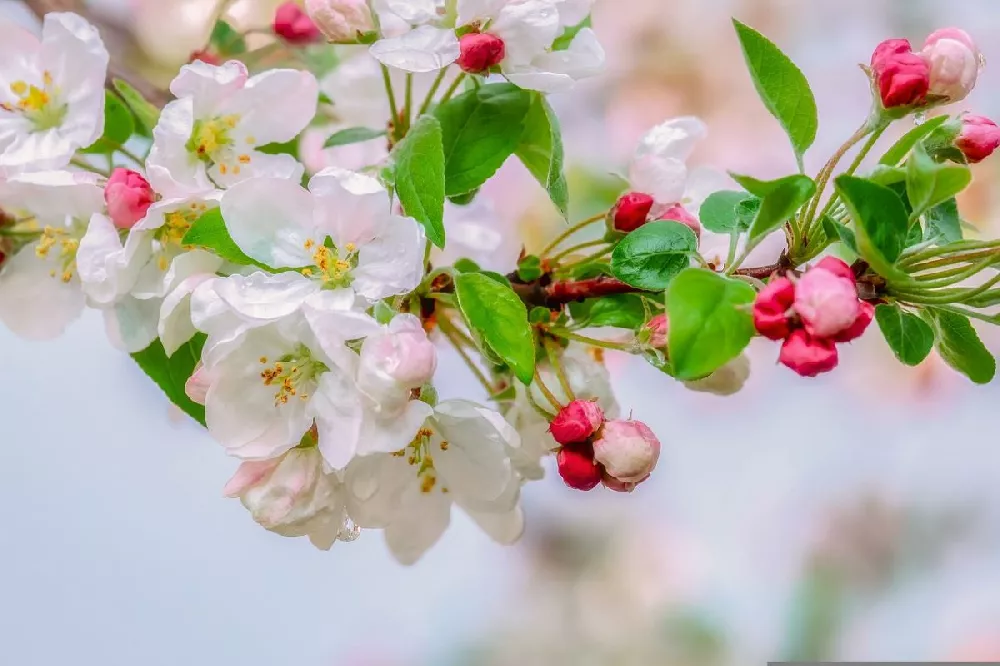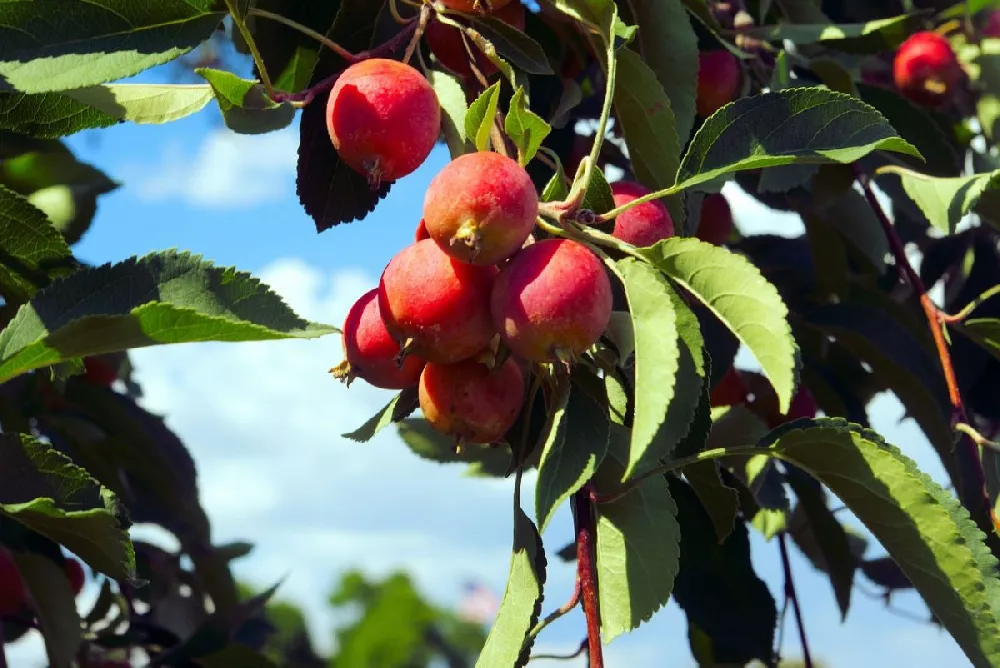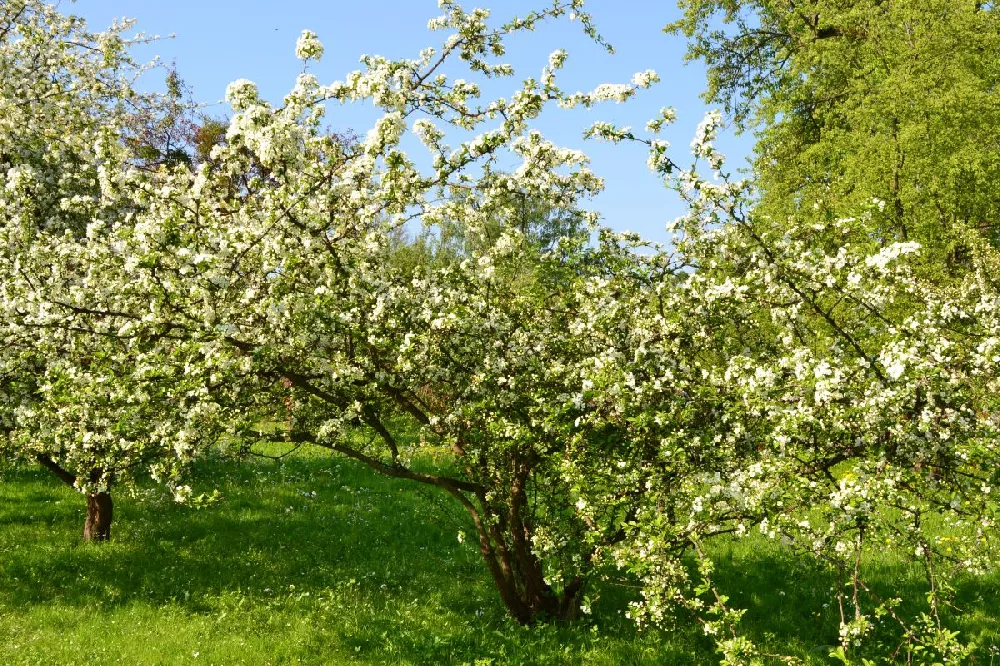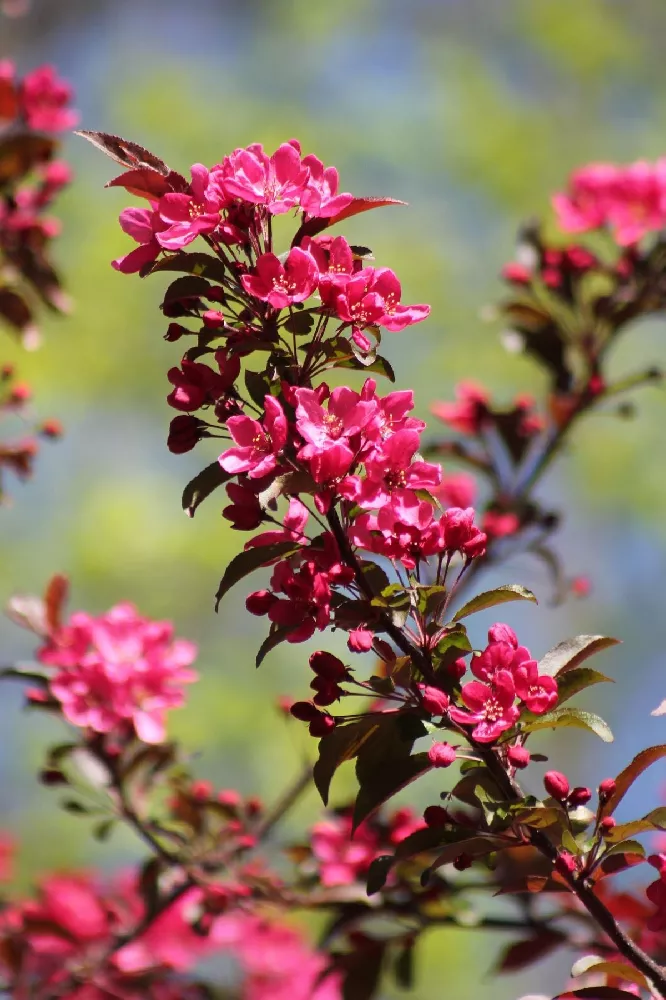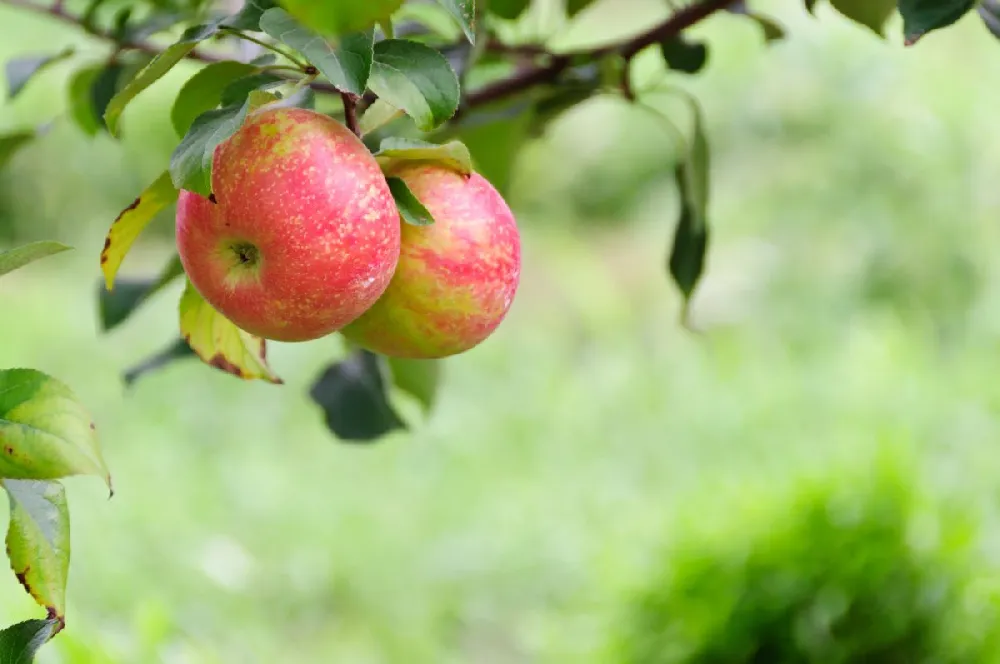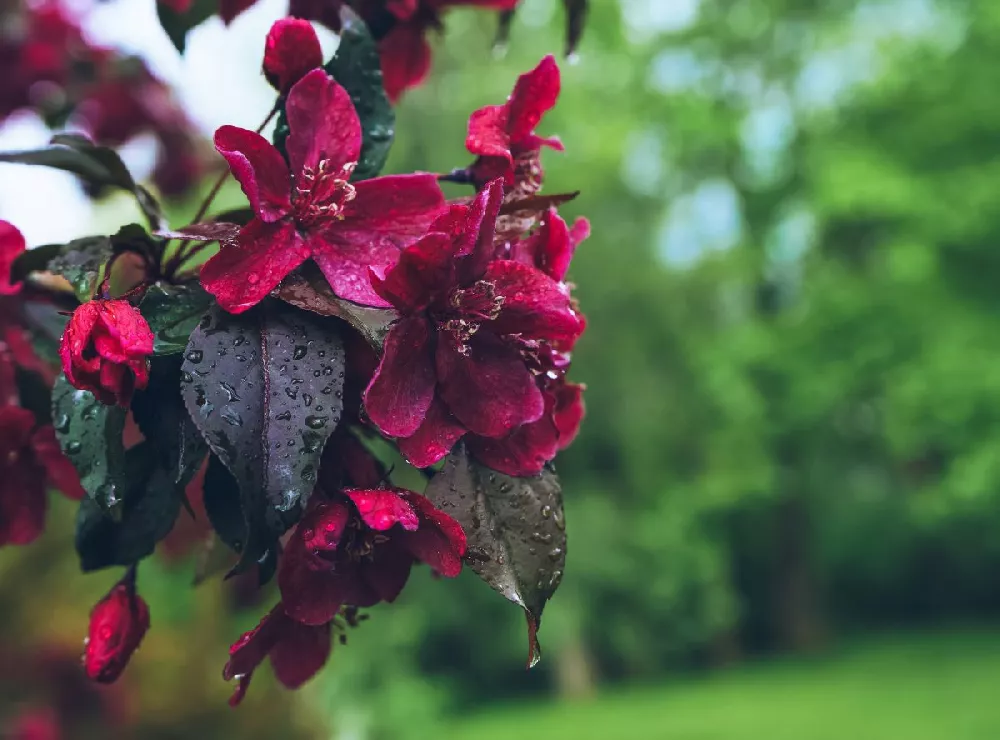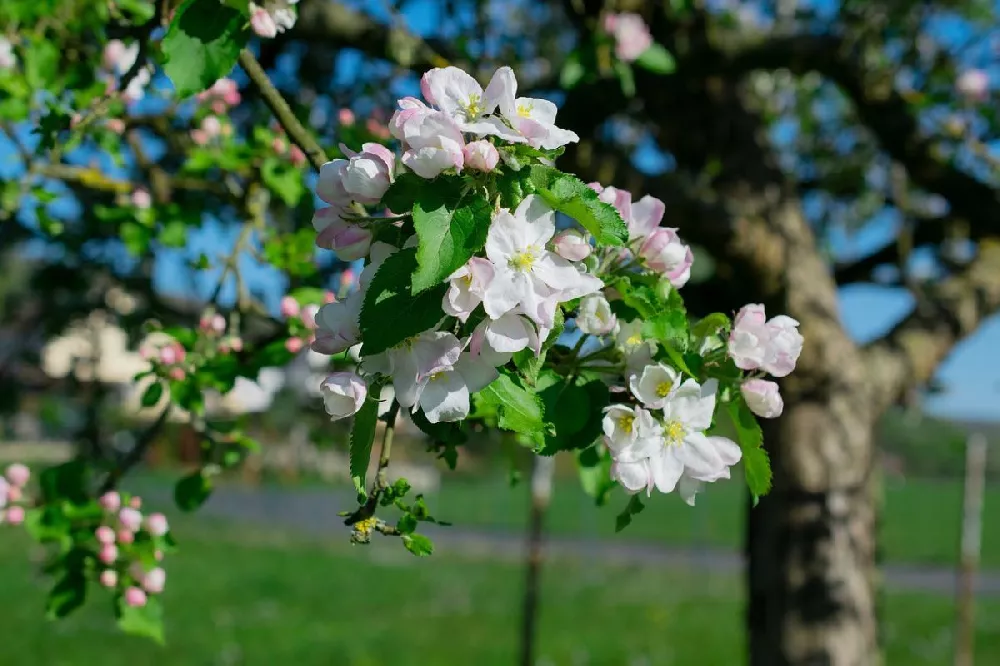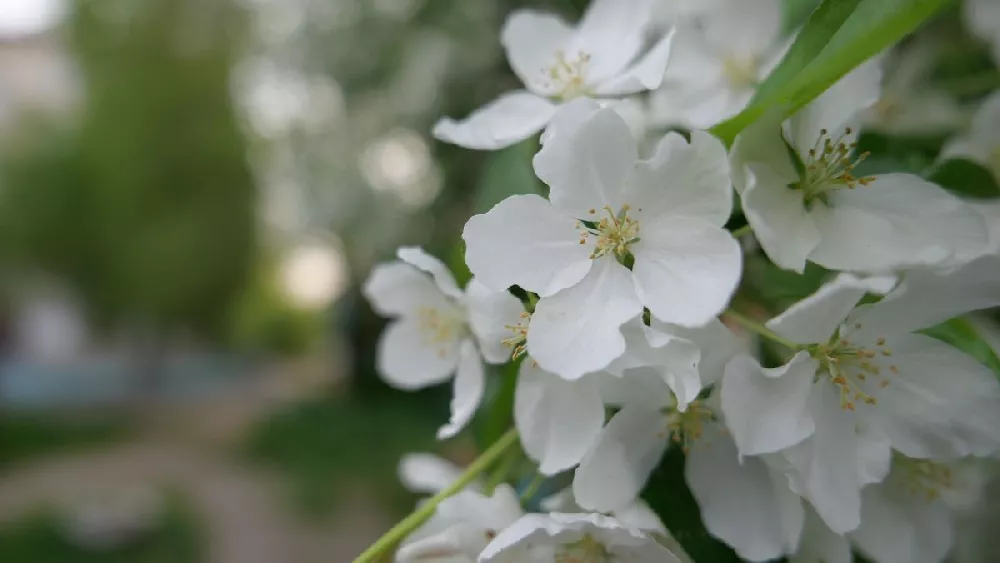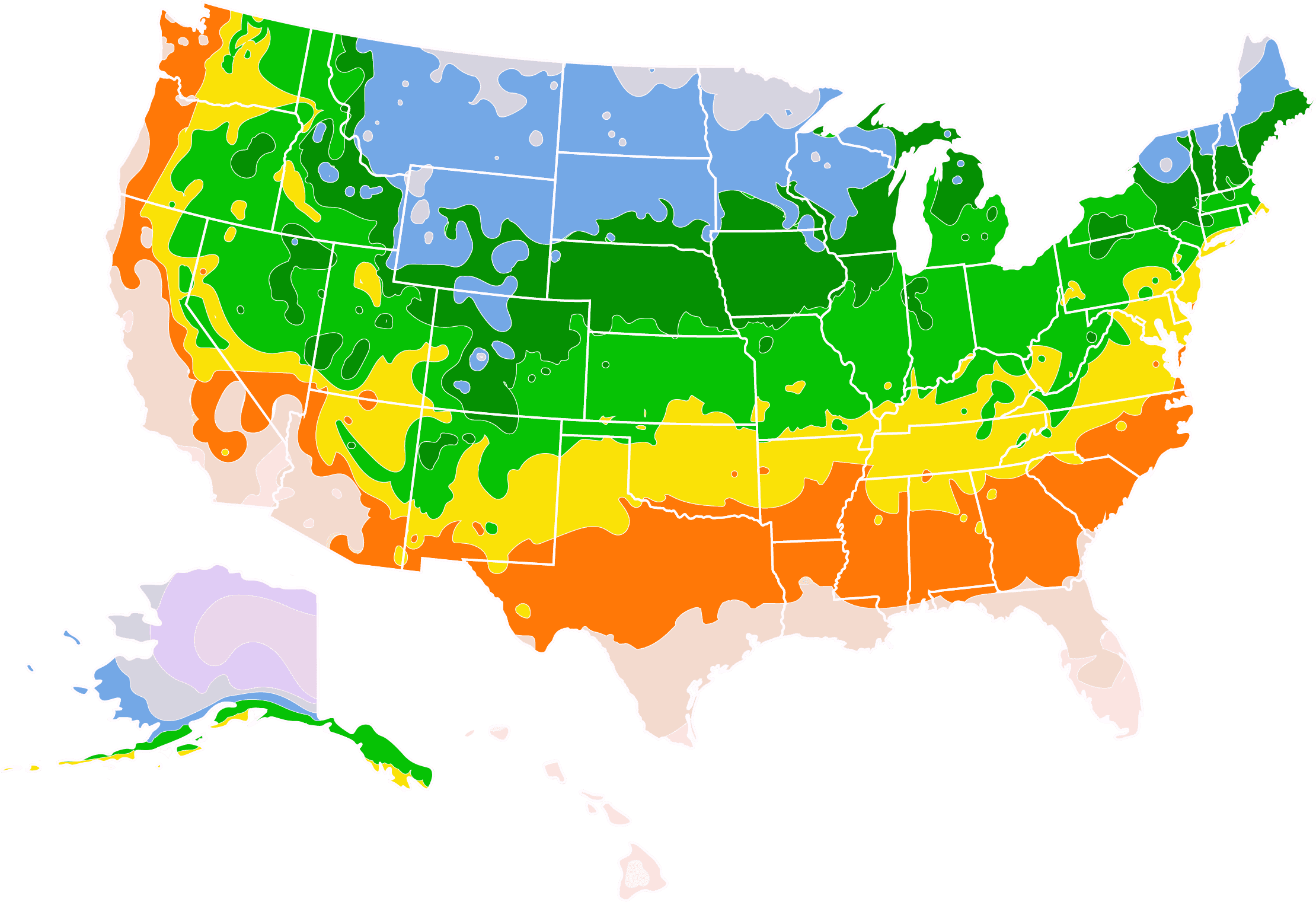- Home >
- Flowers >
- Trees and Plants with White Flowers >
- Sargent Crabapple Tree
Sargent Crabapple Tree for Sale - Buying & Growing Guide
- Ships in 1-2 days
- 1-Year Warranty Eligible
- Pots or accessories are not included unless specified in the product options.
Shipping Details:
Once your order is shipped, you’ll receive an email with a tracking number and estimated delivery date. Most orders ship immediately, but some items are seasonal and may only ship in spring or fall. These products are noted on the website.
When looking for an easy-to-care-for ornamental tree that is sure to make an impression on anyone who visits your garden, the Sargent Crabapple Tree is one of the best plant options around. This species, Malus sargentii, is surprisingly easy to keep healthy and provides striking visual appeal in both spring and fall. In the early months of the growing season, this tree covers itself with white blossoms, which give way to bright red crabapples that dangle from the branches in autumn.
- Sargent Crabapple trees bloom in spring with many brilliant white flowers.
- Lovely red crabapples hang from the branches in fall.
- With a compact form and simple care requirements, this plant is easy to maintain.
Plant Care
Sunlight

You should plant a Sargent Crabapple Tree where there is full sunlight.
Watering
Mature plants are drought tolerant. Supply water during long periods of hot or dry weather.
Fertilizing

You can feed this tree in spring or fall with a balanced fertilizer.
Planting and Care
Planting instructions
While consistent moisture and good drainage are the ideal soil conditions for a Sargent Crabapple Tree, this species shows an impressive ability to adapt to many soil types including soils of nearly any pH. As long as the growing location has plenty of sunlight, your Sargent Crabapple should put forth healthy new growth each season. To plant this tree, start by digging a hole that is as deep as the root ball is tall and about twice as wide. Loosen the root ball before planting to encourage the roots to spread laterally.
Watering and nutrients
After planting a Sargent Crabapple, you should water it often enough to maintain consistent soil moisture throughout the first growing season. Once this plant has established itself in its new growing location, it will have a significant reduction in water needs. Typically, you’ll only need to water this tree during the hottest parts of the year or during long droughts. A Sargent Crabapple Tree will survive just fine without fertilizer, but if you want yours to perform at its very best, you should feed it with a balanced fertilizer during either spring or fall.
Pollination
The Sargent Crabapple is a self-pollinating tree, which means that an individual plant is capable of pollinating itself. During the spring, when this plant displays numerous open white blooms, several types of pollinator insects, including honeybees, will arrive to feed on the nectar and transfer pollen from one flower to another. When this takes place, your Sargent Crabapple will develop fruits that begin as small, round and green. As the summer progresses, those crabapples will grow and darken to red, making for the tree’s second colorful display of the growing season.
Pruning
Prune your Sargent Crabapple Tree in late winter or early spring just before the new growth arrives. Your first goal when pruning is to remove any branch that is dead, broken or diseased. Then, you can focus on thinning this tree’s canopy to allow for better air circulation, which lessens the odds of moisture-related infections. Lastly, you can use your pruning cuts to alter the overall shape and appearance of your Sargent Crabapple Tree to your liking.
Pests, diseases and animals
A well-established Sargent Crabapple Tree will have decent disease resistance but is not entirely immune to such issues. Complications, including cedar apple rust, frogeye leaf spot and apple scab, can all affect this tree and many of the plant species related to it. Along with those disease threats, pests may also threaten your Sargent Crabapple Tree. Common garden pests, including leafminers, aphids, mites and Japanese beetles, can all harm a Sargent Crabapple. Other insects, including moths, can destroy the fruits of this tree.
Harvesting
It is most common for gardeners to grow the Sargent Crabapple Tree strictly for its ornamental value. However, while the fruits of these trees do supply an impressive color display, their flesh is also edible. In their raw form, these fruits have a sour taste, which is why those who eat them typically incorporate them into a jam or something similar. If you’re interested in trying crabapples, it’s best to allow them to hang on the tree for as long as possible, which makes for the sweetest flavor. At times, this can mean harvesting in winter.
Achieving maximum results
Along with having many other advantages, the Sargent Crabapple Tree is also relatively easy to transplant due to its shallow spreading root system. This means that if, for whatever reason, your initial growing location was not suitable for your Sargent Crabapple Tree, you should have no problem transplanting it to a better growing area. Also, if you plant this tree with the goal of harvesting, then you should be wary of the many birds that may arrive to eat the crabapples before you have a chance to pick them.
FAQs
Are Sargent Crabapples poisonous?
While the flesh of a Sargent Crabapple tree's fruit is edible, even if it is a bit sour in its raw form, the seeds are not something you should consider ingesting. These seeds contain toxins that can be quite harmful to those who eat them. However, the toxins present in a Sargent Crabapple Tree's seeds are also present in the seeds of nearly all popular apple varieties. As such, it is safe to eat crabapple fruits as long as you remove the seeds first.
Is the Sargent Crabapple Tree a messy tree?
Although the Sargent Crabapple Tree is both beautiful and comes with an easy care routine, there is one slight downside to this tree. The flowers, leaves and fruits of this tree can all cause a considerable mess in your garden. The mess that the flowers and leaves make is manageable, but the fruits can be a bit more troublesome. The many crabapples this tree produces can cause staining to paving areas when they fall to the ground and can be a nuisance to clean up in general.
How large does a Sargent Crabapple Tree grow?
Unlike other crabapple trees, the Sargent Crabapple Tree does not grow to be a mid-sized tree of about 15 to 25 feet tall. Instead, the Sargent Crabapple is more shrublike as it reaches a height and spread of six to 10 feet. The matching height and spread create a mounded overall form with the lowest limbs hanging just a few inches above the ground.
Compare Similar Products
You can't add more Product Name - Product size to the cart.
OK